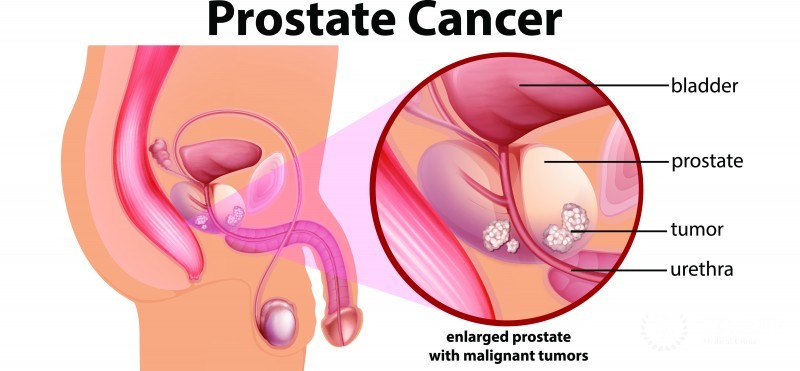ABOUT Prostate Cancer - Symptoms, Causes and Treatment - Maximed Turkey
Prostate Cancer Surgery
If your doctor tells you that surgery is an option for
you, it might seem like the only way to help save your life. Surgery is seen as
a quick fix, which can lead to unnecessary side effects and complications. Even
if this seems scary or intimidating, there are many benefits of choosing
surgery instead of radiation therapy.
When it comes to cancer treatment options, surgery is
not always the best solution for men diagnosed with prostate cancer.
Radiation therapy can delay the progression of prostate
cancer by shrinking tumors before they spread out throughout the body. With
fewer side effects and quicker recovery times, radiation therapy may provide
more comfort to patients who need immediate relief from symptoms caused by
disease progression.
Radical (Open) Prostatectomy
A radical prostatectomy is one of the most invasive
surgeries for removing prostate cancer. This surgery involves the removal of
the entire prostate gland, including some surrounding nerves and tissue.
Radical prostatectomies are usually recommended when cancer has spread to other
parts of the body or if there is a high probability that it will spread in the
future.
Radical prostatectomy also provides great results for
patients dealing with urinary problems and other constant pain caused by
localized disease progression. If you need immediate relief from your symptoms
or if your condition is advancing very slowly, then a radical prostatectomy
could be the best option for treating your disease.
The recovery period from this procedure can vary from
patient to patient, depending on their health and age.
Laparoscopic Radical Prostatectomy
This surgical procedure is performed through tiny
incisions, which is similar to how a laparoscopic (keyhole) surgery is performed
for female patients. However, this procedure is more invasive than traditional
open surgery because the surgeon has limited access to certain parts of the
body.
Women who had a similar laparoscopy-assisted surgery
for breast cancer often choose this radical prostatectomy since it offers the
same benefits and better healing capabilities.
Prostate Cancer: Radiation Therapy
Radiation therapy is a powerful way to reduce tumor
size in localized prostate cancer, but it does have a few side effects that
need to be monitored to avoid life-long risks.
Today, many patients with localized prostate cancer are
still choosing radiation therapy over surgery due to the potential for longer
survival times and better quality of life. If you live in an area where there
are few or no radiation centres close by, then your doctor may recommend that
you consider this option.
Radiation therapy may be recommended for patients who
have either low-risk cancers or high-risk disease that has spread to other
parts of the body.
The type of radiation therapy received after the
surgery depends on your situation, whether you have a tumor in one or both
testicles or if cancer has penetrated your bladder wall.
Like radical prostatectomy, radiation therapy can also
cause nerve damage in men who have prostate cancer.
Recovery from Radical Prostatectomy
Once your surgery is complete, you will be instructed
on what to expect in the immediate and long-term recovery periods. You should
take care of your body's needs and continue to follow any doctors' orders for
recovery.
There may be several different methods used to measure
pain during your recovery process. It can take up to 3 months for your prostate
cancer treatment to start working as intended. Your doctor will likely
recommend physical therapy or support group activities as part of your
post-surgery regimen at first. However, after coming out of the recovery stage
you should start more intensive physical activities.
The most common side effect of this surgery is pain
in the groin or pelvis area. You can expect your doctor to prescribe pain
medication to help control these symptoms. Blood in the semen is another common
disease progression after prostate surgery. Your doctor will provide you with
prescribed medication and therapy recommendations for this symptom as well.
Recovery from Radiation Therapy
After prostate cancer treatment, radiation therapy has
some long-term effects on men that need monitoring by your doctor or clinic
staff. The most common side effects are swelling of the scrotum, bruising on
the scrotum, and changes in urine flow patterns caused by bladder irritation.
Frequently Asked Questions Prostate Cancer
What is Prostate Cancer?
Prostate cancer is a type of cancer that develops in
the prostate gland, a walnut-sized gland located below and to the outside of
the bladder (urinary bladder). The prostate surrounds part of the urethra (a
tube that carries urine from the bladder outlet to outside) and helps secrete
fluids into semen. It also cells that line the walls of the urethra.
Therefore, prostate cancer affects only men and usually
occurs when cells change and grow uncontrollably (invade), beyond what is
normal for their function or growth. That is why most men with prostate cancer
are older than 65 years old. The risk increases according to age. About 13
percent of men in their 60s and nearly half of the men in their 70s and 80s
have prostate cancer.
How common is Prostate Cancer?
In the United States, about 1 out of 7 men will be diagnosed with prostate cancer during their lifetime, but only 1 in 41 men will die from the disease. The death rates for this disease are due to high-risk cancers that have spread beyond the prostate gland into nearby tissue or nearby lymph nodes.
1 in 3 African-American males and nearly 1 out of 2
older African-American males will develop prostate cancer during his lifetime,
compared to 1 in 6 white males.

